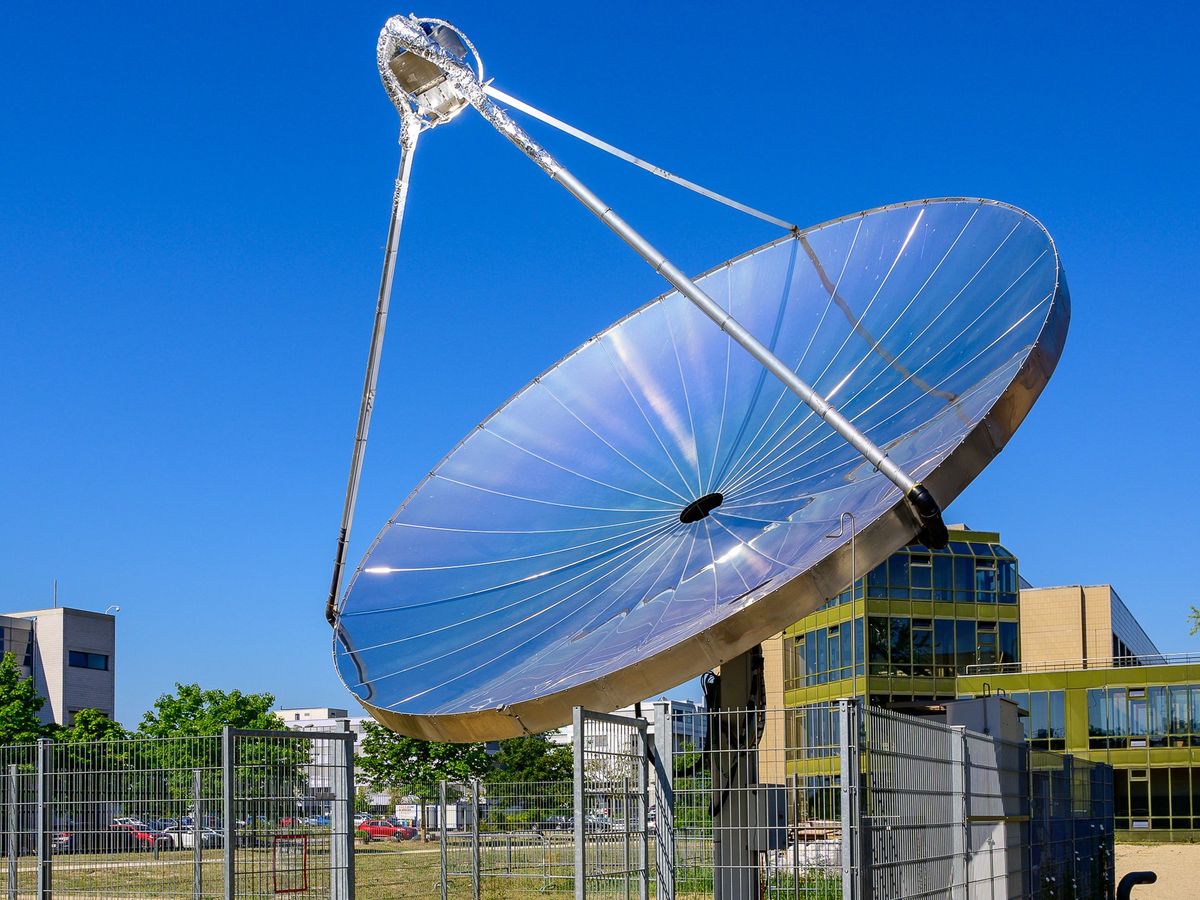Researchers have built a kilowatt-scale pilot plant that can produce both green hydrogen and heat using solar energy. The solar-to-hydrogen plant is the largest constructed to date, and produces about half a kilogram of hydrogen in 8 hours, which amounts to a little over 2 kilowatts of equivalent output power.
“We have cracked the 1-kW ceiling for the production of solar hydrogen,” says Sophia Haussener, a professor of renewable energy science and engineering at the Swiss Federal Institute of Technology (EPFL) in Lausanne. “With half a kilogram of hydrogen you can drive a car for about 100 kilometers. Or you can use it in a fuel cell to produce electricity and satisfy about half the electricity needs of a four-person household a day.”
About 95 percent of the hydrogen used in the world today—mainly for producing fertilizers and other chemicals or for oil refining—is made by cracking natural gas, which produces carbon dioxide in the process. But hydrogen also holds tremendous promise as a fuel for airplanes and ships, for heating homes, and for producing electricity.
To be a sustainable fuel, though, hydrogen needs to be made using renewable energy or nuclear power with minimal emissions. This idea of green hydrogen is now picking up speed around the world. It is the centerpiece of Australia’s plans to decarbonize its economy, for instance.
One of the most sustainable ways to make hydrogen is to use solar energy to split water into hydrogen and oxygen. This can be done using photoelectrochemical (PEC) systems that combine a photovoltaic device and an electrolyzer device. The PV device absorbs sunlight and generates electricity that drives the electrolytic splitting of water. “You don’t have to design and pay for two separate systems,” Haussener says. “It’s one single integrated system, so ultimately there’s a cost advantage.”
PEC systems have shown tremendous promise at laboratory scale. Researchers have thus far demonstrated small-scale setups with less than 100 watts of output power. Haussener says that scaling up to larger systems is not easy because it involves balancing efficiency, stability, and operating costs, and maximizing production rates.
To achieve that balance, she and colleagues focus the sun’s radiation onto a small spot, at which they place a solar-cell module using mirrored reflectors. They use tandem multijunction III–V semiconductor solar cells, which are very efficient at converting sunlight to electricity, but prohibitively expensive to use in large-area devices.
For the large kilowatt-scale system they have reported in Nature Energy, the researchers built a 7-meter-wide parabolic solar dish covered with reflective mirrors that concentrates solar radiation to about 1,000 times that of the sun’s normal output. The dish tracks the sun over a 6 to 8 hour period.
The electricity produced by the solar-cell module drives a polymer electrolyte membrane electrolyzer, a type of electrolyzer that uses a solid plastic material as the electrolyte. These devices can operate at very high current densities, giving them an edge over other electrolyzers when used in conjunction with wind and solar energy, which can create sudden spikes in power.
Not all of the concentrated solar energy that falls on the solar cell is converted to electricity. Some of it is converted into waste heat, which the team extracts using a heat exchanger. The heat could be used for space heating or hot water in buildings, Haussener says, or for fueling industrial processes.
It took the team about two years to build the system on the EPFL campus and work through several design and operational challenges. One key challenge, for instance, was to carefully manage the flow of water through the system to maximize the use of heat and increase efficiency.
At the moment, the hydrogen they produce feeds into a fuel cell to produce electricity in a neighboring building. Through a startup called SoHHytec, the EPFL team is now scaling up their hydrogen and heat-production technology to commercialize it.
SoHHytec is building a system with a larger, 9-meter-wide solar dish, Haussener says. Multiple dishes can be tied together to make a system as big or small as customers need. Its first demonstration project, slated to be operational by the end of the year, will be for a metalworking company that will use hydrogen and heat for metal processing.
This story was updated on 12 April 2023.
This article appears in the July 2023 print issue.
- Solar-to-Hydrogen Water Splitter Outlasts Next Best Tech By 14x ›
- Solar-to-Hydrogen Tech Sees “Remarkable” Efficiency Jump ›
Prachi Patel is a freelance journalist based in Pittsburgh. She writes about energy, biotechnology, materials science, nanotechnology, and computing.



